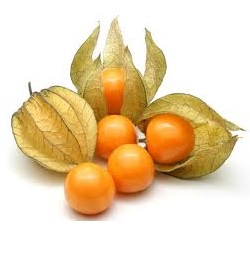Cape Gooseberry (Physalis edulis syn. P. peruviana)
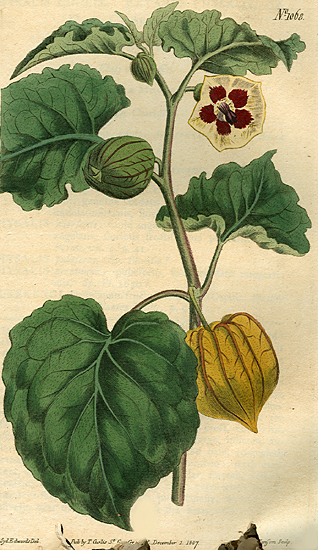
Not originally from the Cape (native to Peru), and not related to gooseberries at all, the Cape gooseberry belongs to nightshade family which includes tomatoes, aubergines and potatoes. The French name is “amour en cage” meaning “love in a cage” while the Afrikaans name is “appelliefie” (appel = apple; liefie = small love).
Description
This short lived perennial shrub grows between 90cm and 2m tall, and has a sprawling habit. It has grey-green velvety hearth-shaped leaves on ribbed purplish hairy stems. Delicate yellow bell-shaped flowers with dark brown spots are produced all summer to late autumn and is followed by smooth and waxy spherical berries ripening from green to bright yellow-orange and characteristically encased in a papery inflated calyx shaped like a Chinese lantern. The berries contain many small seeds.
Related to tomatillo (Physalis philadelphica) and to the Chinese lantern (Physalis alkekengi).
Ideal growing conditions
Easy growing, seemingly thriving on neglect, and prefers a well drained soil and sunny position. Protect from wind and cold. It is frost sensitive, but moderately tolerant of salt-spray. It can be kept productive for up to four years if it is cut back after each harvest, but is often grown as an annual in colder regions. Moderate water needs – preferring moisture during spring and summer, but not overly wet conditions, and it is somewhat drought tolerant. Do not use fertilizer as too rich a soil promotes leaf growth at the expense of fruit production. It is self-fertile and pollinated by wind and insects.
It is suited to pot culture.
Propagation
Propagated through seeds sown in spring or autumn, or stem cuttings from 1-year old plants.
Harvesting
The berries are ready to harvest when the papery calyx turns a straw-tan colour, and the fruit comes off very easily from the stems. Always look around the ground as the ripe berries fall off quite easily. Remove the berries from the husks only when you are ready to use them as they keep exceptionally well with the calyx kept intact.
Uses
Culinary: Only ripe fruit are used (papery husks are discarded). With their crisp tart-sweet taste, Cape gooseberries are delicious eaten fresh, and are often added to fruit salads and desserts, and are attractive edible garnishes. They can be used fresh to decorate cakes (especially cheesecake) and are great for making preserves – jams, jellies and fruit chutneys where the high pectin content ensures self-setting. They can also be cooked and stewed, pairing particularly well with apples and ginger.
Medicinal: Rich in vitamins A, C, B, as well as phosphorous, iron and bioflavanoids. Besides its nutritional value, the leaves have been used as a warm poultice for inflammation.
Toxicity
As a member of the Solanaceae family, all parts of the plant, except for the ripe berries, are poisonous.
Other names for Cape gooseberry
Cape gooseberry (South Africa, New Zealand and Australia), golden berry, Peruvian groundcherry, jam fruit or ras bhari (India), gu niao or mao suan jiang (in Chinese pinyin), Physalis (UK), Inca berry, Aztec berry
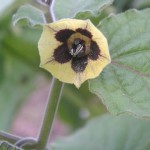
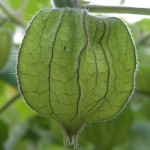
![By Toyah (Own work) [Public domain], via Wikimedia Commons Harvested ripe berries](http://meadowsweet.co.nz/wp-content/uploads/2015/11/Golden_berry-150x150.jpg)
![By Abbas Hasnain (by my camera) [CC BY 3.0 (http://creativecommons.org/licenses/by/3.0), GFDL (http://www.gnu.org/copyleft/fdl.html) or CC BY 3.0 (http://creativecommons.org/licenses/by/3.0)], via Wikimedia Commons Fruit showing seeds](http://meadowsweet.co.nz/wp-content/uploads/2015/11/Physalis_peruviana_physalis__bladder_is_the_plant_and_its_fruit_also_known_as_Cape_gooseberry-150x150.jpg)
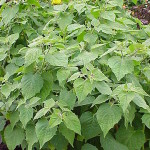
Sources
Discovering Fruit & Nuts, Susanna Lyle, Bateman, 2006
Botanica’s Pocket Organic Gardening, Dr. Judith McCleod, h.f. ullmann, 2007
Wikipedia
Folia

